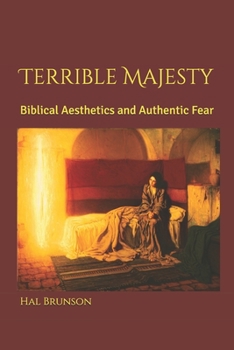Terrible Majesty: Biblical Aesthetics and Authentic Fear
Full-color edition: The Christian classical-school movement, with its emphasis upon classical languages, literature, music, and art, has contributed to a resurgence of aesthetic sensibility that echoes the Renaissance. As might be expected, that revival of classical learning has reinvigorated aesthetic discernment among its proponents regarding Goodness, Beauty, and Truth. That encouraging development signals the partial recovery among some Christians of a renewed aesthetic awareness that characterized the church at more thoughtful moments in her history; however, we say only a "partial recovery" of aesthetic awareness because, in terms of how the Bible characterizes sublime experience, the current emphasis upon Goodness, Beauty, and Truth is more Platonic than it is biblical, and therefore represents a deficient philosophy of aesthetics that leads to the following potential errors: ∙a misinterpretation of aesthetics biblically understood;∙a misrepresentation of The Sublime; and,∙most seriously, a mischaracterization of God.Those errors in current thinking about aesthetics in relation to Goodness, Beauty, and Truth result from an oversight of an equally important fourth dimension of The Sublime, perhaps more important because of its omission - the fear of God - to which I refer in this book as Terror, also called Dread, or in Kierkegaardian and Nitzschean terms - Angst. As we shall see, any biblically-based understanding of aesthetics must include Terror as an essential component of The Sublime, especially when sublime experience involves a direct encounter with Almighty God.
Format:Paperback
Language:English
ISBN:1723140007
ISBN13:9781723140006
Release Date:November 2019
Publisher:Createspace Independent Publishing Platform
Length:332 Pages
Weight:1.36 lbs.
Dimensions:0.9" x 6.0" x 9.0"
Related Subjects
PhilosophyCustomer Reviews
0 rating





